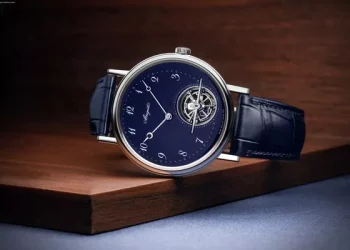Rolex, the iconic Swiss luxury watch brand, has gained worldwide recognition for its unparalleled craftsmanship and precision. As a symbol of elegance and prestige, Rolex watches are highly sought after by collectors and enthusiasts alike. One common question that arises among watch enthusiasts is, “How many watches does Rolex produce annually?” In this article, we delve into the production output of Rolex and shed light on the fascinating world of their manufacturing process.
The Veiled Mystery of Rolex’s Production Numbers
Rolex has long been known for its secretive nature when it comes to revealing production figures. The company guards this information closely, adding an air of mystique to its already prestigious brand. Unlike many other watch manufacturers who openly disclose their annual production numbers, Rolex keeps its production volume under wraps, fueling speculation and curiosity within the industry.
The Speculated Figures and Industry Estimates
Although Rolex does not officially disclose its production figures, industry estimates and speculation can provide some insights. Experts estimate that Rolex produces anywhere between 800,000 to 1 million watches per year. These figures are based on a combination of market analysis, supply chain evaluations, and insider knowledge. However, it is crucial to note that these numbers are merely educated guesses and should be taken with a grain of salt.
Rolex’s Commitment to Quality
Over Quantity One reason behind Rolex’s decision to keep its production numbers private may be its unwavering commitment to quality over quantity. By maintaining a certain level of exclusivity and limiting the supply, Rolex cultivates an aura of desirability around its watches. This strategy allows the brand to focus on meticulous craftsmanship, rigorous quality control, and attention to detail, ensuring that each timepiece lives up to the highest standards of excellence.
In-House Manufacturing and Vertical Integration
One key aspect that sets Rolex apart from many other watch manufacturers is its high degree of vertical integration. Rolex prides itself on having in-house manufacturing capabilities for nearly all components of its watches. From the movements to the cases, dials, and bracelets, Rolex has invested heavily in vertical integration to maintain control over quality and ensure a consistent supply chain. This level of control allows Rolex to produce watches that meet its stringent standards without relying heavily on external suppliers.
The Role of Skilled Artisans and Experts
Producing a Rolex watch requires the expertise of highly skilled artisans and experts in various fields. The intricate process involves master watchmakers, gem-setters, dial-makers, and craftsmen specialized in numerous disciplines. Each watch undergoes meticulous assembly, adjustment, and testing by experienced professionals. Rolex’s commitment to excellence is reflected in its dedicated workforce, which plays a vital role in ensuring the production of exceptional timepieces.
The Rarity Factor: Limited Editions and Special Models
In addition to its regular production models, Rolex releases limited editions and special models that further contribute to the exclusivity of its watches. These unique pieces often incorporate innovative materials, intricate designs, or historical significance. Limited editions are typically produced in smaller quantities, adding to their collectability and increasing demand among enthusiasts.
Balancing Supply and Demand
Rolex carefully manages the delicate balance between supply and demand. While maintaining an aura of exclusivity, the brand also strives to satisfy market demand to the best of its abilities. This balance requires meticulous planning, forecasting, and allocation of resources to ensure that authorized retailers receive an appropriate number of watches based on their respective markets.
The Secondary Market and Collectible Value
The limited supply of Rolex watches, coupled with their enduring popularity, has created a thriving secondary market. Pre-owned Rolex watches often command premium prices due to their desirability and collectible value. Some rare and vintage models can even appreciate significantly over time, making them valuable investments for collectors and investors.
Conclusion
While the exact number of watches Rolex produces annually remains a closely guarded secret, industry estimates suggest an output ranging from 800,000 to 1 million watches per year. Rolex’s commitment to quality, vertical integration, and skilled craftsmanship are integral to its production process. By striking a balance between maintaining exclusivity and meeting market demand, Rolex continues to be one of the most esteemed watch brands globally. Whether it’s through their regular production models or limited editions, Rolex timepieces uphold their reputation for excellence and timeless elegance.
Related topics:





























